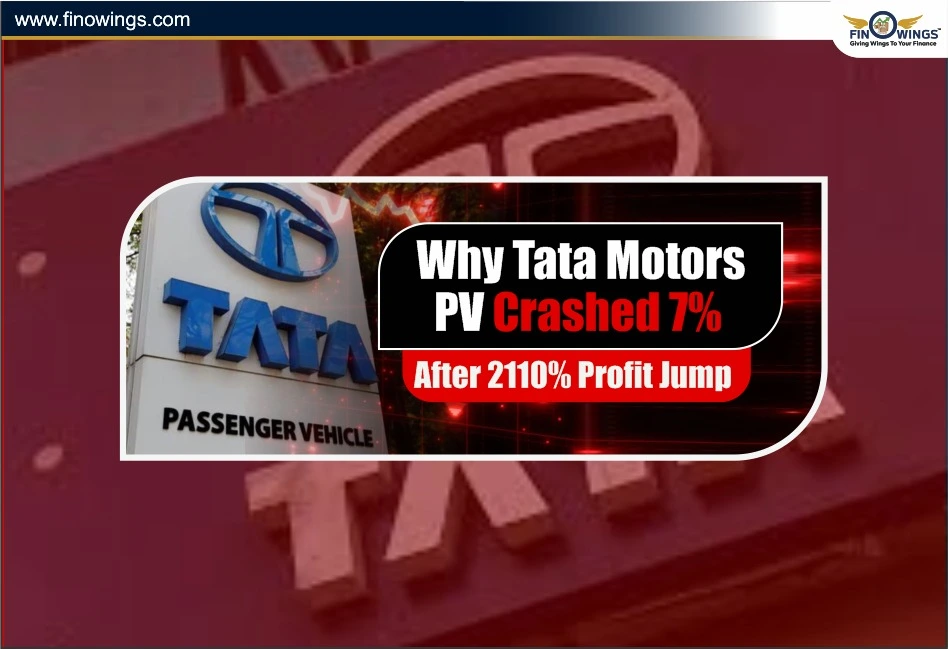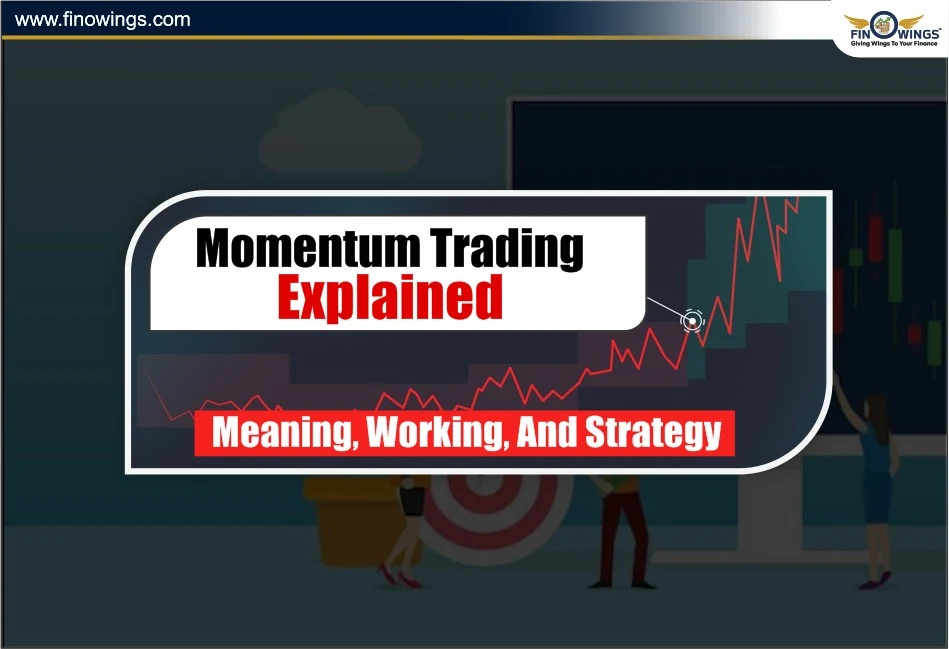Home >> Blog >> Why Tata Motors PV Crashed 7% After 2110% Profit Jump
Why Tata Motors PV Crashed 7% After 2110% Profit Jump

Table of Contents
Shares of Tata Motors PV have fallen by almost 7% since announcing a staggering 2,110% increase in net profit year-on-year. Initially, it would seem like incredible news, but once explained, in context to the previously stated profits, the company remains unprofitable, and issues segment profit guidance, and which makes it a little easier to understand. Let's analyse the discrepancy and understand the reasons behind the TMPV crash this quarter.
Tata Motors PV Profit Jump: What Caused it?
For the quarter ending September, Tata Motors PV showed a consolidated net profit of about 76,170 crores, a 2,110% increase from the previous September quarter. The profit rise, however, was due to what is called an abnormal gain of 82,616 crores linked to the Tata Motors Commercial Vehicle demerger.
The core of the business lost 6,368 crores in net profit which is considered last this time; it reported a gain last year. So, TMPV's share price is going up due to, in theory, profits. In practice, the company is still underperforming, and that is explaining the unusual price decline.
Why TMPV Shares Declined – Main Reasons
1. Weak Income and Profit Margins
Revenues fell by about 13-14% and profits increased, which indicates demand and volume pressures in the market. Revenues were down to about ₹72,300 crores. More significantly, the luxury division, Jaguar Land Rover (JLR), has faced significant volume declines due to malign cyberattacks and model wind-down issues. Investors were already concerned.
JLR also reduced EBIT margins for FY26 forecasts to 0-2% (at levels previously higher, and about which JLR had already guided).
2. One-Time Gains Concealing the Real Weakness
While profits gained because of the demerger, this gain is non-recurring and investors realise this headline is meaningless to the market because of structural issues with the business.
3. Profit Booking and Pre-Event Pricing
TMPV shares had, most likely in the market narrative, priced in some information. Once the gain came through in the pre-event, the market expressed profit booking and a risk-off outlook, following the release of some guidance cuts.
4. Focus on Future Guidance, Not Just Past Numbers
The market is concerned about JLR's economic profit and loss margins, increased volumes, positive predictions, and guidance. For profit improvement, it is difficult to distinguish because JLR is cutting operations, demand is weak globally, and there are continuing production issues. As such, shares dropped by about 6 to 7% on that day.
What does The Drop Mean for The Share Price?
When the share price of TMPV declines while having made large profits, it indicates that the market is reading the profit guidance very skeptically.
The market reacts negatively to non-cash accounting gains, perceiving them as having no value relative to positive earnings. Profit guidance cuts, margin cuts, and negative economic shocks (cyber attacks, tariffs, poor global demand) are negative shocks to the share revaluation expectations.
The share price can be expected to increase in the long-term if operational challenges are addressed. JLR's volume losses and the extension of TMPV's margin losses indicate expectations of future TMPV share price losses.
A few implications:-
If You Are More Optimistic:
-
If you believe Tata Motors PV can JLR, recover volumes, profit margins, and grow in the monetise EV/India business, the share may be an opportunity.
-
The big profit figure does remove one liability from the demerger, which does clear something from the balance sheet, which is a positive structural change.
If you’re cautious:
-
There is a weak near-term margin outlook, especially at JLR which is a key one for TMPV earnings.
-
The core business did post a loss, even excluding the one-off gain, leading to the possibility of more negative surprises.
-
The ~7% decrease, for short-term traders, indicates concern and volatility is ahead.
What Should Investors Watch Now:
Will Q3 and H3 FY26 earnings be positive? Will there be growth? Will there be an improvement in the margins?
What is the recovery trajectory for JLR? This is especially concerning new model launches, tariffs and supply chain stability.
What about the domestic PV business? There is expected growth in the EV space, as well as in ICE volumes, and overall cost savings.
What about the guidance updates? If there is an increase in management confidence, the share price may even increase.
On valuation, the business is in recovery, but there are still high expectations which lead to a lower margin of safety.
Conclusion
The fact that the TMPV share price dropped sharply (about 7%) after a profit jump of 2,110% looks odd at first sight. However, if you realise that the profit increase was a result of a one-off demerger profit, combined with slim revenues, weak margins, and with JLR being cautiously negative, the market reaction becomes rational.
For those holding Tata Motors Passenger Vehicles Ltd. stock, the lesson is that not just the headline number but the quality of earnings, incremental guidance, and movement in fundamental operations are all critical. The TMPV share might still be intriguing, but with high risk and high-uncertainty in the short term.
DISCLAIMER: This blog is NOT any buy or sell recommendation. No investment or trading advice is given. The content is purely for educational and information purposes only. Always consult your eligible financial advisor for investment-related decisions.
Author
Frequently Asked Questions
Because the profit jump came from a one-time demerger gain, not from core business growth. The actual operating performance was weak, which led to a price decline.
The company posted an underlying loss of ₹6,368 crores in the core business. Lower revenues, weaker demand, and JLR volume issues impacted real profitability.
Jaguar Land Rover reported volume declines, cyberattack disruptions, and lower EBIT margin guidance, all of which negatively affected investor sentiment.
It depends on your risk appetite.
-
Optimistic investors may see long-term opportunities in EV growth and balance sheet cleanup.
-
Cautious investors may avoid due to weak margins, uncertain demand, and negative guidance.
Investors should watch:
-
Q3 & H2 FY26 earnings
-
JLR recovery & new models
-
Domestic PV & EV sales trends
-
Updated profit/margin guidance
-
Management commentary on turnaround


















